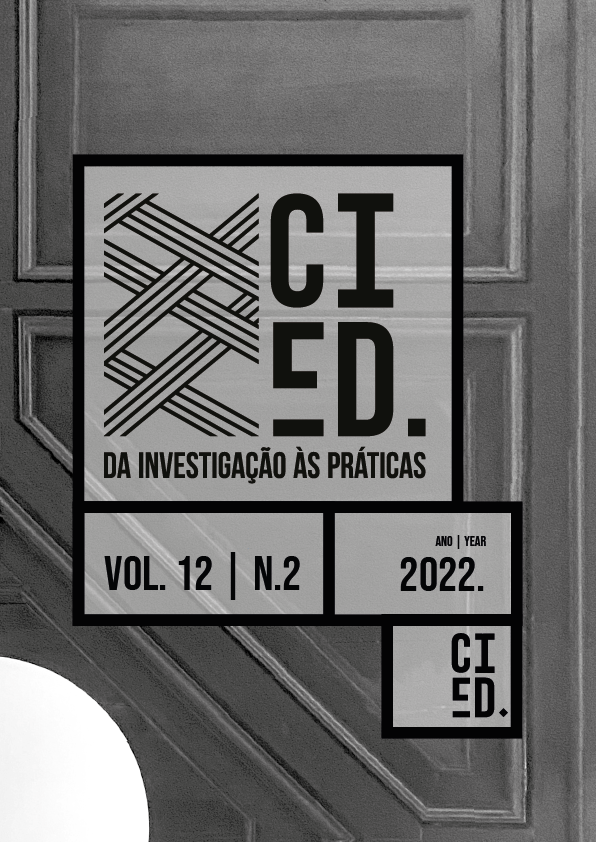Self-perception of competences for professionals in the development of inclusive arts projects
DOI:
https://doi.org/10.25757/invep.v12i2.335Keywords:
Inclusion, Arts education, Participation, Training needsAbstract
The generation of spaces for participation becomes a key element for the development of social inclusion processes in people with disabilities. Experiences with art are environments in which people interact with their peers, are accepted and recognized, promoting processes of identity and belonging to the community. However, it requires well-trained professionals who are able to create truly inclusive artistic contexts where there is no room for marginalization. The objective of the article is to identify the self-perception of competencies to develop inclusive artistic projects by professionals of artistic and socio-educational institutions; and to determine their training needs to implement them. By means of a mixed methodology, and through a questionnaire, interview and focus group, 388 professionals of artistic and socio-educational institutions from five European countries participated in the study. The results show that, although the professionals feel competent to develop inclusive artistic projects, they require training that allows them to deepen their understanding of what is meant by inclusive artistic projects, as well as inclusive methodologies in which no person feels excluded. For professionals, creating collaborative environments becomes an element of success for their implementation.Downloads
References
Aiscow, M. (2012). Haciendo que las escuelas sean más inclusivas: lecciones a partir del análisis de la investigación internacional. Revista de Educación Inclusiva, 5(1), 39-49
Ainscow, M. (2020). Promoting inclusion and equity in education: lessons from international experiences. Nordic Journal of Studies in Educational Policy, 6 (1),7-16,DOI:10.1080/20020317.2020.1729587
Alonso Arana, D. (2017). La educación artística en las personas con diversidad funcional. Habilidades bio-psico-sociales y calidad de vida.[Tesis]
Aparicio, E. (2014). La inclusión, mediante el arte, de personas con diversidad funcional. Aularia: El país de las aulas, 2, 53-66
Calderón, I. (2014). La discapacidad no es una realidad biológica y personal, sino que fundamentalmente es de naturaleza social y cultura. Aularia: El país de las aulas. 2, 43-46
Echeita, G. (2008). Inclusión y exclusión educativa: de nuevo voz y quebranto. REICE: Revista Electrónica Iberoamericana sobre calidad, Eficacia y Cambio en Educación, 6, (2). Recuperado a partir de https://revistas.uam.es/reice/article/view/5437
European Union Agency for Fundamental Rights (2018). Informe sobre los derechos fundamentales 2018. Dictámenes de la FRA. https://fra.europa.eu/sites/default/files/fra_uploads/fra-2018-fundamental-rights-report-2018-opinions_es.pdf
Etxeberria, X. (2018). Ética de la inclusión y personas con discapacidad intelectual. Revista Española de Discapacidad, 6 (I), 281-290
Forlin, C., Earle, C., Loreman, T. y Sharma, U. (2011). The Sentiments, Attitudes and Concerns about Inclusive Education Revised (SACIE-R). Scale for Measuring Pre- Service Teachers’ Perceptions about Inclusion. Exceptionality Education International, 21(1), 50-65
Liasidou, A. y Antoniou, A. (2015). Head teachers leadership for social justice and inclusion. School Leadership and Management. https://doi.org/10.1080/13632434.2015.1010499
Morón, M. (2011). Accesibilidad universal en el museo. En Acaso, M. (Coord.), Perspectivas. Situación actual de la educación en los museos de artes visuales. Madrid: Ed. Ariel
Nilholm, C., & Göransson, K. (2017). What Is Meant by Inclusion? – An Analysis of High Impact Research in North America and Europe. European Journal of Special Needs Education 32 (3), 437–451. https://doi.org/10.1080/08856257.2017.1295638
Robledo, A. (2018). Collaborative artistic practices for cultural accessibility: Building bridges between disability and community. In Roque, P.; Lucas, A. and Frayao, C. (Eds). Representing disability in museums. Imaginary and identities. CITCEM: Porto
UN (2006). CRPD-Convención sobre los Derechos de las Personas con Discapacidad. http:// www.un.org/esa/socdev/enable/documents/tccconvs.pdf
UN (2020). The Sustainable Development Goals Report. https://unstats.un.org/sdgs/report/2020/The-Sustainable-Development-Goals-Report-2020.pdf
UNESCO (2020). Towards inclusion in education: Status, trends and challenges: The UNESCO Salamanca Statement 25 years on. UNESCO
Wertz, F. J., Charmaz, K., McMullen, L., Josselson, R., Anderson, R., and McSpadden, E. (2011). Five ways of doing qualitative analysis: Phenomenological psychology, grounded theory, discourse analysis, narrative research, and intuitive inquiry. New York, NY: Guilford Press
Whittemore, M. (2019). Art for all: a study on the art educator’s role in inclusive art programs for people with disabilities within museums and community art institutions. [Master of Arts Thesis, The University of Arizona]. https://repository.arizona.edu/bitstream/handle/10150/636640/azu_etd_17690_sip1_m.pdf?sequence=1
Downloads
Published
How to Cite
Issue
Section
License
Copyright (c) 2022 Author(s) and Da Investigação às Práticas

This work is licensed under a Creative Commons Attribution 4.0 International License.
Articles published or submitted to Da Investigação às Práticas are licensed according to Creative Commons Attribution License (CC BY 4.0). Authors agree that:
Copyrights of all articles published are retained by authors with first publication copyright granted to the journal.
All articles are under the Creative Commons Attribution License recognizing the authorship of the publication and identifying that first publication took place in this journal.
Authors have the right to free distribute or make available in private or institutional pages the version published by Da Investigação às Práticas: Estudos de Natureza Educacional provided the original proper citation.
The journal only accepts articles not published previously (except in the form of an abstract or as part of academic thesis), that it is not under consideration for publication elsewhere. After published, the article cannot be published again partial or totally without the editorial board consent.





 e-ISSN: 2182-1372
e-ISSN: 2182-1372